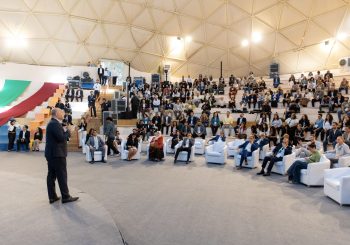By Maydaa Abo El-Nadar
The district of Shubra, located north of Cairo, is home to Egypt’s most diverse cultures. Although the neighbourhood holds many residential areas, it has deeply rooted historical background.
In the 17th century, Founder of Modern Egypt Mohamed Ali built himself a palace in Shubra and extended Shubra Street all the way to his palace in 1808. In 1854, the neighbourhood hosted the first railway line in Egypt from Cairo to Alexandria, started in Shubra.
Also, Shubra is the muse for remarkable figures in Egypt; it produced several talents who enriched arts, politics and sports in Egypt. Starting from Egyptian-Italian singer Dalida, Egyptian singer Muharram Fouad, Poet, lyricist, playwright and cartoonist Salah Jahin, Poet Ibrahim Nagy and the Egyptian actress Nabila Ebid among a glossary of art work celebrating the authenticity of Shubra.
No doubts that Shubra has been a muse for Egyptian writers, it still inspires many more in the modern literature.
Medhat Al-Adl, Egyptian scriptwriter and poet, celebrated his book signing “Shubra Egypt, 36 Al-Afdl Street” at the Cairo International Book Fair held in February.
The book is divided to 32 poems written in Egyptian dialect. Only a small introduction for each of the poems is in classical Arabic.
Language is not just grammar and vocabulary; it is a gate to discover the culture of its speakers. Thus, when composing verses about a neighborhood such as Shubra and its residents, choosing the Egyptian dialect and not the classical Arabic was a wise choice of the poet. Reader will notice that the poems in the book are influenced by Salah Jahin’s style.
Al-Adl opens up with a journey in time and space to this distinguished neighbourhood, with a special dedication to Nikos Kazantzakis writer of the famous “Zorba the Greek”. The first poem is dedicated to Kazantzakis. “I read Zorba when I was 16 years old and it influenced forming my personality,” says Al-Adl.
The book “Shubra Egypt, 36 Al-Afdl Street” is inspired from “Zorba the Greek” by Nikos Kazantzakis.
Both Zobra and the book in question object the hypocrisy of people claiming they are religious. On the other hand, Kazantzakis and Al-Adl believe that true religion resides in delivering love, beauty, peace, and justice.
Second and ninth poems are about Al-Adl’s brother Samy Al-Adl, a famous actor who passed away in 2015, and Al-Adl’s daughter Aya respectively. Poem 17 came under the title of Salah Jahin, whom the writer considered as his godfather.
After the second poem, the reader will be introduced to the people with whom Al-Adl interacted during his life in Shubra, including the crazy mechanic Abdo, Souad daughter of the kiosk’s owner, a neighbor called Olga, another neighbor called Toma, teachers Lotfy and Soad, Sayed the Foul’s seller (beans served for traditional Egyptian breakfast), Marzouka the servant, Sobhy and the garbage man.
As if living in 36 Al-Afdl Street, reader will get to know significant details about Shubra’s residents and the course of the daily life there.







Comments (2)
[…] https://egyptianstreets.com/2017/05/17/egyptian-poetry-book-celebrates-the-cultural-heritage-of-shub… […]
[…] https://egyptianstreets.com/2017/05/17/egyptian-poetry-book-celebrates-the-cultural-heritage-of-shub… […]